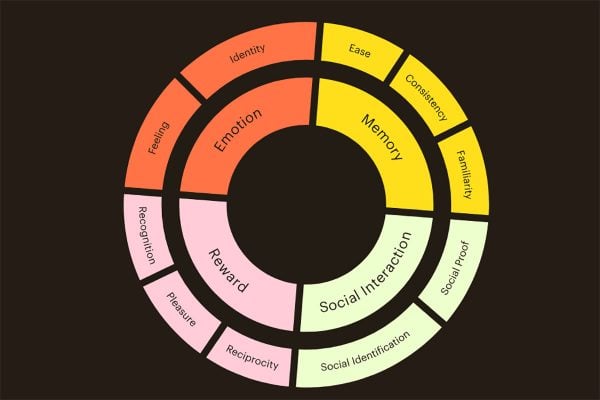The bang of party poppers, the recklessness of Champagne and the smoke of the fireworks may seem a distant memory, but a week into the new year we need to take a look at what may lie ahead in retail – now that our heads have cleared a little.
Technology has had its most profound impact on retail this year as ecommerce has eaten into real-world commerce as consumers tighten their belts. There will be more of the same in 2019 – but technology is going to have some interesting effects.
It is going to be pivotal in saving the High Street – well revamping it – while it is also likely to see new players enter the online world. It could even, as we shall see, start to eat into Amazon’s seeming hegemony over ecommerce.
So what are we looking at? Here are some thoughts for 2019…
What’s in-store?
News from Next just after the Christmas splurge revealed that, surprisingly, sales had gone up… the sting in the tail being that they had risen on the back of online taking sales from stores.
This comes as no real surprise: it was a mobile and online Christmas. Brexit uncertainty has certainly dampened spending, but where it took place it has been directed more to the digital this Christmas, with more than half of it happening on mobile.
For starters shops aren’t dead: they are just changing – and like all things in the digital age, that change is rapid. This speed is part of the problem with most large retailers not agile enough to change as rapidly as their consumers’ mores.
However, change is here and retailers need to adapt their stores.
Technology has now become an imperative for stores. The convenience and slickness of the web – and mobile – needs to rapidly find its way into stores. And it needs to have a point. Tech for tech’s sake won’t cut it, but better customer service, richer personalisation and the ability to actually buy things even if stock is low, is imperative.
Payments in store need to also be revamped. This time next year I don’t want to be standing it a queue to buy things – and nor do many other people.
“High street retailers must bring convenience to the shopper in 2019 in a variety of ways,” says Julian Fisher, chief executive of local deals specialist jisp. “This includes in-store product information delivered directly to their mobiles, faster and simpler payment options which again, should include mobiles. Other ways of introducing convenience should include ways to help shoppers with their purchases such by offering click-and-collect and even click to deliver – taking the battle against online resellers head on.”
What about marketplaces?
The biggest threat to bricks and mortar retailers are websites: often their own websites, but also those of marketplaces and other third-party sellers that are undercutting, or able to offer better delivery and customer experience.
In many ways marketplaces are the department stores of the internet era, with endless aisles and endless choice. No wonder that real department stores are struggling to keep pace – they simply can’t compete.
However, marketplaces have a strong role to play in 2019’s new retail landscape – but perhaps not quite as we expect.
Amazon will, naturally, continue to dominate, extending its reach thanks to its great online experience (for customers) and its penetration into the device market (which we shall come to). But there will be other ‘destinations’ that will underpin online retail that, while not marketplaces as we currently define them, but nevertheless sell other people’s goods.
Publishers – especially in fashion and apparel, but that is just the start – will increasingly act as collators and collectors and arbiters of taste and will sell the goods they curate.
An early example is women’s magazine Marie Claire. Its Marie Claire Edit site is already curating and promoting (and selling) clothes from Farfetch, Selfridges, ASOS, Topshop, NET-A-PORTER and MATCHESFASHION.COM. Using the strapline ‘Shop the brands you love. Fashion Editor approved’, Marie Claire Edit offers a key endorsement angle for brands, with a Marie Claire Edit approved badge for items carefully selected by Marie Claire’s Fashion Editors.
The publisher joins Mashable and Time magazine in selling things published online and in its pages, marking a shift in where retail takes place. These trusted third parties – and by that I mean shoppers trust their taste and opinion – offer a unique way for shoppers to filter the vast choice they face when buying, as well as being directed to brands that they feel share their values – by a brand that shares their values.
This is a very powerful USP that such sites have – something even more powerful than utilitarian Amazon offers.
The tech that will shape 2019
Combining this power curation/recommendation idea from trusted non-retail brands with some of the hot tech for 2019 – visual search (H&M, Asos, eBay), voice technology (Alexa, Google Home, Siri) – and suddenly Amazon may not look quite as dominant.
Being able to point at something and find it to buy is extremely powerful, especially for Gen X and younger. My kids are lazy like that: they want to just find it and buy it (with my money, ha!) they want the gear not the brand. If publishers can sit as the platform for that then they are going to start to win.
Similarly, social media sites offer the same ability. Witness Instagram and its picture based shopping,which really started to fall into place in 2018.
Again, these will give Amazon a run for its money – as well as all other established retail brands.
Things have been tough in 2018. Brexit is likely to make 2019 tougher still. However, necessity is the mother of invention and retailers will survive – they will need to turn to tech to do so, but it will happen.
The larger threat lies in new entrants from outside retail joining the marketplace race and, if they can leverage tech that retailers (and even Amazon) have yet to use, they could change retail yet again.
Perhaps 2020 will see Amazon and Marie Claire stores on the High Street, Amazon running a mobile phone network and the new year champagne being delivered by the winners of the next Strictly… Happy New Year.








3 Responses
Ecommerce in 2019? I think Amazon will go for the Online Groceries market in a big way in the UK. More and more people are getting their weekly shop now delivered and Amazon will want a bit of that, as people need to eat and can live without a counterfeit bit of plastic bought on it’s site, that weekly shop is a regular income. I know our local supermarket just bought another 25 Vans for Online, it is a real growth area.
The UK is in recession now, low wages, and high household debt will mean people have less to spend and it is everywhere (car and house market is normally the first sign)….
Amazon will see this and have the resources to buy into that food market properly in the UK (more than pantry), while the likes of ebay will not evolve or adapt to the times and continue to decline…Amazon will jump onto the Groceries market in a big way….
I see massive growth potential in Instagram Shop[ping channel, especially in clothing & accessories niche but not only – anything visual can and will be sold on Instagram as well as Pinterest. These two platforms and the shopping experience they have started to offer is the most organic buying process possible and when widely adopted, will become massive channels on their own. Instagram shopping will be huge while Pinterest most likely will stay in a sub-niche, similar like Etsy compared to eBay.
@Andrew….Why do you quote growth. Anybody can grow a business but not everybody can make a profit…